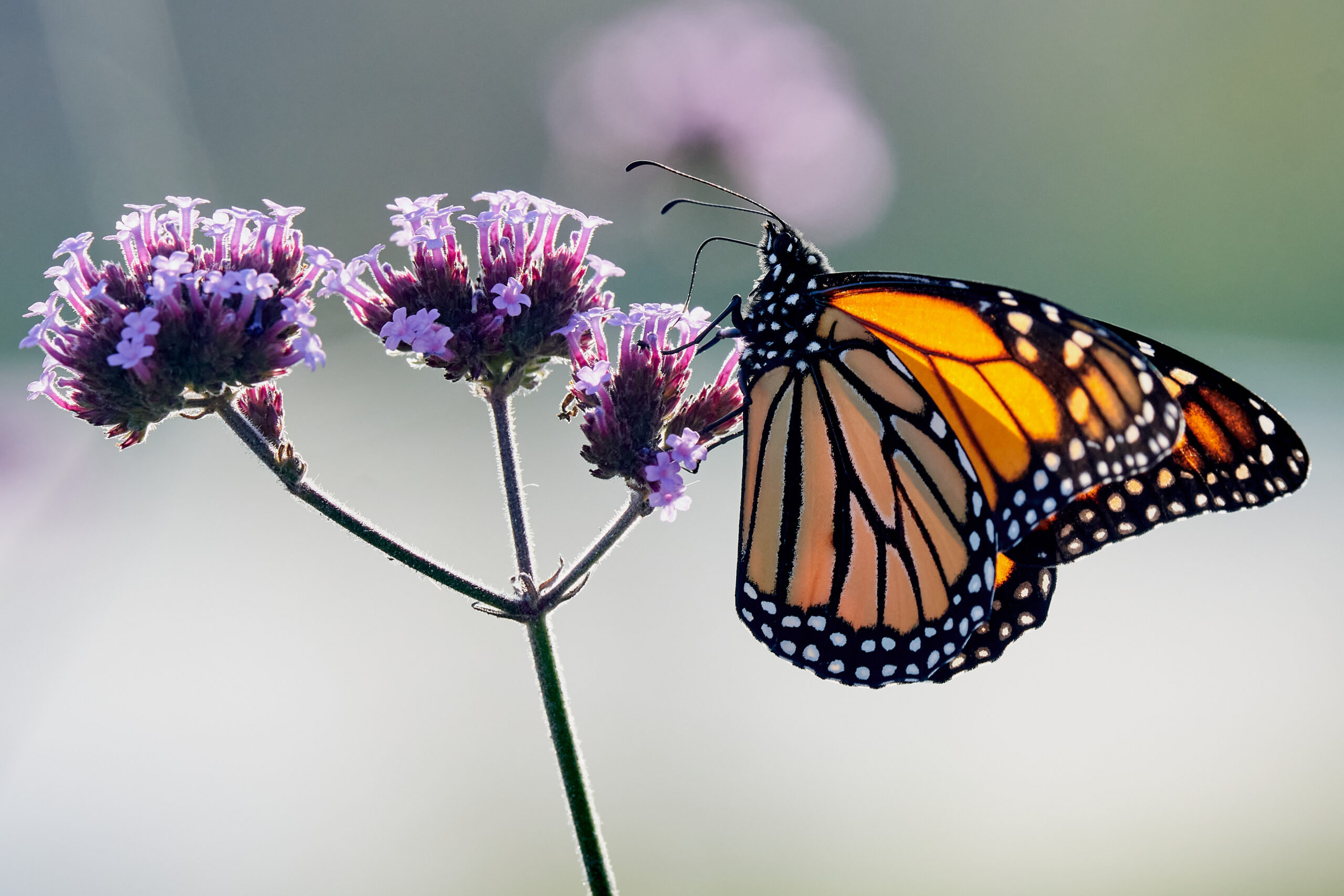In Our Backyard: Monarch Butterfly

The monarch butterfly (Danaus plexippus) is one of North America’s most iconic insects, known for its vivid orange-and-black wings and extraordinary migratory journey. In the Thompson-Nicola region, this remarkable butterfly is more than just a summer visitor, it’s a living link between our local landscapes and ecosystems thousands of kilometres away.
Medium-sized and instantly recognizable, monarchs have bright orange wings patterned with black veins and edged with white spots. Males can be identified by small black scent glands on their hind wings, while females have thicker black vein markings. Their caterpillars are equally eye-catching, wearing bold yellow, black, and white stripes.
Distribution
In British Columbia, monarchs are rare breeders, with numbers that vary from year to year. In the Thompson-Nicola region, they are most often spotted in open, sunny habitats such as grasslands, riparian meadows, and roadsides—particularly where milkweed (Asclepias spp.) grows.
Showy milkweed, the monarch’s essential larval host plant, occurs in select patches along the Thompson River valley, in wetland edges, and in grassland openings. Monarchs here are part of the western population, which breeds across western North America and migrates to overwintering sites in coastal California, and occasionally central Mexico.
Threats
Monarchs are listed as Endangered under Canada’s Species at Risk Act (SARA) and are red-listed in British Columbia. Populations have declined sharply in recent decades.
In the Thompson-Nicola region, key threats include:
- Loss of milkweed habitat due to development, roadside vegetation control, and herbicide use.
- Decline of nectar-rich flowering plants needed for adult feeding during breeding and migration.
- Extreme weather and climate change, which can alter breeding timing and survival rates.
- Pesticide exposure, especially from systemic insecticides that contaminate host and nectar plants.
Because monarchs depend on habitat across their entire migratory range, the loss of overwintering sites in California and Mexico also affects the butterflies we see here.
Conservation
Local conservation work focuses on protecting and restoring both milkweed and nectar-rich plant communities. Key actions include:
- Preserving and expanding native milkweed stands in grasslands, riparian zones, and along roadsides.
- Reducing mowing frequency and avoiding pesticide use in key habitat areas.
- Encouraging community participation in monitoring programs such as the NatureServe and Journey North.
- Integrating pollinator habitat into grassland and riparian restoration projects.
Indigenous-led stewardship initiatives in Secwépemc and Nlaka’pamux territories also recognize the importance of pollinators like monarchs. Protecting and planting milkweed supports cultural values of reciprocity, biodiversity, and ecosystem health, while benefiting other pollinators critical to food and medicine plants.
Cultural Significance
In many Indigenous cultures, butterflies are seen as messengers, seasonal markers, and symbols of transformation. While monarchs hold deep cultural meaning in Mexico as symbols of the return of ancestors, in the Thompson-Nicola their arrival signals the flowering of important plants and the seasonal abundance of meadows and riparian areas.
Supporting monarchs here is about more than preserving a beautiful insect, it’s about safeguarding the health and diversity of the ecosystems that sustain both wildlife and people.
Learn More
- COSEWIC Assessment and Status Report: Monarch (Danaus plexippus)
- BC Species and Ecosystems Explorer: Monarch Butterfly
- Journey North – Monarch Migration Tracking
Feature image: Monarch Butterfly, Santa Cruz, Lee Jaffe CC-BY-NC-SA-2.0
